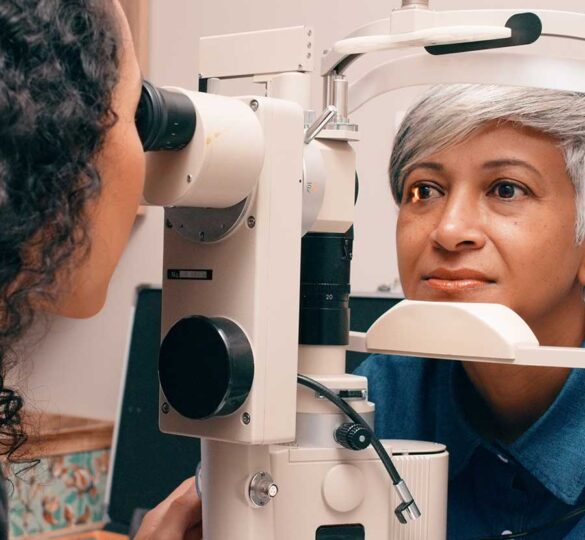Glaucoma Study Shows Higher Prevalence than Previous Estimates
More than 4 million U.S. adults have glaucoma, and about 35% have related vision loss. Both total glaucoma and vision-affecting glaucoma vary by demographic factors.

An estimated 4.22 million U.S. adults had glaucoma in 2022, and 1.49 million had vision-affecting glaucoma, with “substantial variation” in prevalence by region and demographics, according to a research study published in JAMA Ophthalmology
“Up-to-date estimates of how many people have glaucoma in a certain area are vital for addressing the problem,” said Joshua Ehrlich, MD, MPH, lead author of the study and associate professor of ophthalmology and visual sciences at Michigan Medicine. “This kind of information is important for formulating evidence-based policy and public health solutions.”
To estimate the prevalence of glaucoma and related vison loss on a state and county level, Ehrich and colleagues conducted a meta-analysis of data from the National Health and Nutrition Examination Survey, Medicare and IBM MarketScan claims, population-based studies of eye disease and population estimates from the U.S. Census Bureau.
The researchers reported that in 2022, an estimated 4.22 million people had glaucoma, with a prevalence of 1.62% among adults aged 18 years and older, 2.56% among those aged 40 years and older and 5.2% among those aged 65 years and older. They estimated 1.49 million people had vision-affecting glaucoma, with a prevalence of 0.57%, 0.91% and 1.83%, respectively. These findings offer more comprehensive estimates than previous 2016 data, which focused only on adults over 40 and did not account for vision-impairing glaucoma.
The age- and race-standardized prevalence of glaucoma was 1.65% among men and 1.59% among women, with higher prevalence reported among non-Hispanic Black adults (3.15%) vs. non-Hispanic white adults (1.42%). The combined prevalence among Hispanic adults and those of other races and ethnicities was 1.56%.
In addition, the researchers found that glaucoma prevalence varied by state, from 1.11% in Utah to 1.95% in Mississippi.
Regarding vision-affecting glaucoma, prevalence also was higher among men vs. women (0.59% vs. 0.55%), as well as among non-Hispanic Black adults vs. white adults and those of other races (1.2% vs. 0.48% vs. 0.57%).
Additional factors that can contribute to vision loss from glaucoma include limited access to eye care, inability to afford necessary treatments, presence of other chronic conditions, family history of glaucoma, and inadequate education about the disease, its causes, and the need for early intervention.
“Approximately 4.22 million people in the U.S. (1.62% of adults) are estimated to have glaucoma, and 1.49 million people (0.57% of adults) are estimated to have vision-affecting glaucoma, with substantial variation in prevalence across demographic subgroups and U.S. states and counties,” Ehrlich and colleagues wrote. “These estimates may help provide information for the development and prioritization of public health strategies and interventions, the monitoring of epidemiologic trends, and evaluation of programs tailored for communities and populations at highest risk of glaucoma.”
The research team included experts from NORC at the University of Chicago, the Institute for Health Metrics and Evaluation (IHME) at the University of Washington, the University of Michigan’s Department of Ophthalmology and Visual Sciences, and the CDC’s Vision Health Initiative.
Key findings:
- Glaucoma prevalence was higher among non-Hispanic Black adults vs. other racial and ethnic groups.
- Black adults are more than twice as likely to have vision-affecting glaucoma as compared to white adults.
- An estimated 1.94 million men and 2.29 million women are living with glaucoma.
- About 1.5 million adults have vision-affecting glaucoma.
- One in about 180 adults have vision loss from glaucoma, with risk increasing with age.
Source: Prevent Blindness
Posted November 8, 2024